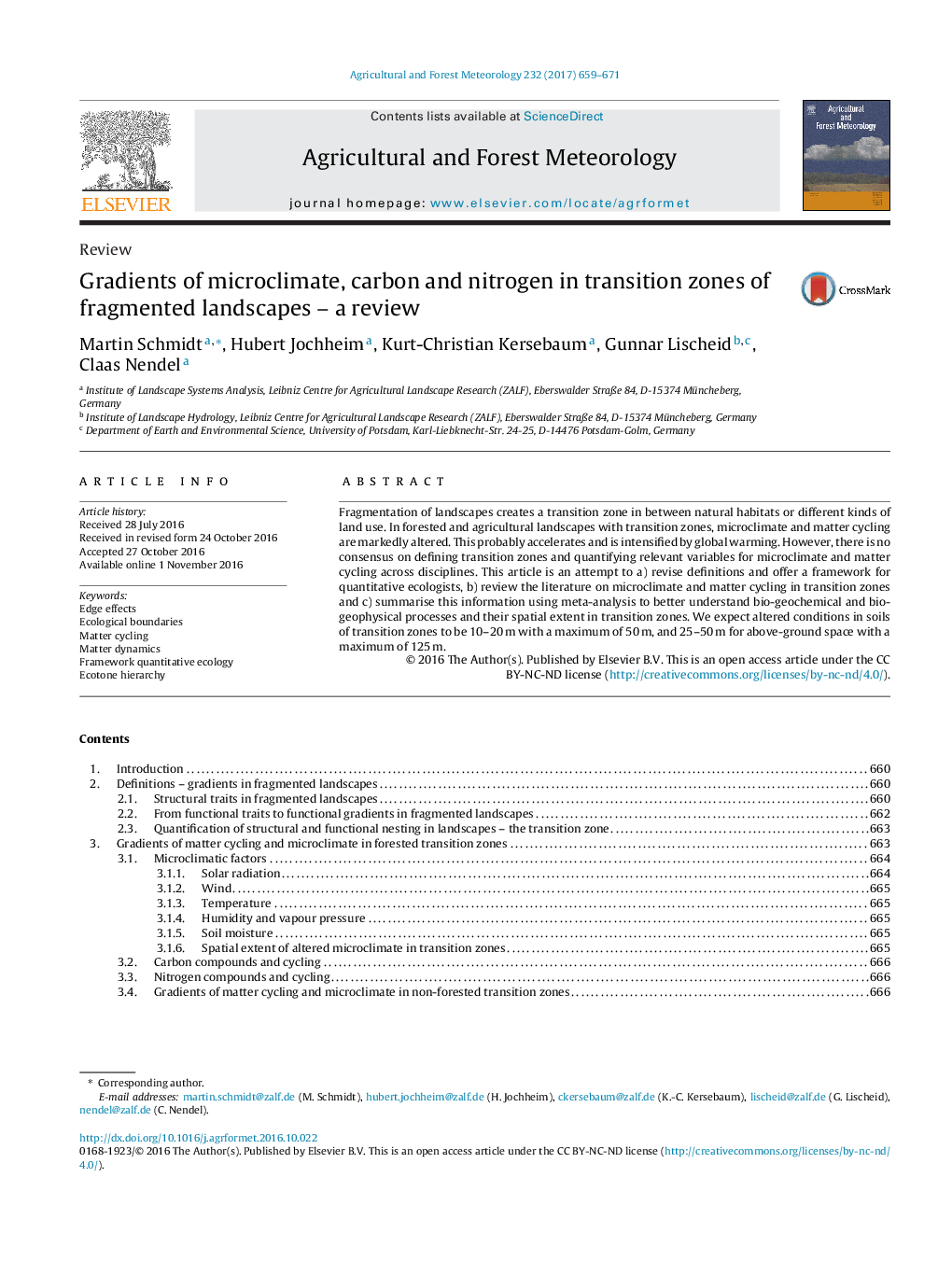| Article ID | Journal | Published Year | Pages | File Type |
|---|---|---|---|---|
| 6458167 | Agricultural and Forest Meteorology | 2017 | 13 Pages |
â¢A conceptual framework for the definition of transition zones is proposed.â¢Microclimatic effects and altered matter cycling in transition zones were reviewed.â¢Altered conditions are expectable 10-20 m belowground and 25-50 m aboveground.
Fragmentation of landscapes creates a transition zone in between natural habitats or different kinds of land use. In forested and agricultural landscapes with transition zones, microclimate and matter cycling are markedly altered. This probably accelerates and is intensified by global warming. However, there is no consensus on defining transition zones and quantifying relevant variables for microclimate and matter cycling across disciplines. This article is an attempt to a) revise definitions and offer a framework for quantitative ecologists, b) review the literature on microclimate and matter cycling in transition zones and c) summarise this information using meta-analysis to better understand bio-geochemical and bio-geophysical processes and their spatial extent in transition zones. We expect altered conditions in soils of transition zones to be 10-20Â m with a maximum of 50Â m, and 25-50Â m for above-ground space with a maximum of 125Â m.
Graphical abstractDownload high-res image (203KB)Download full-size image
